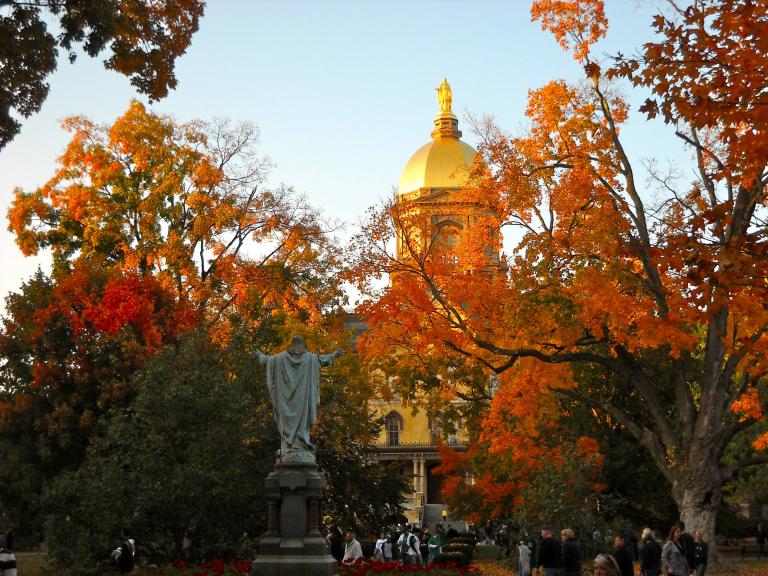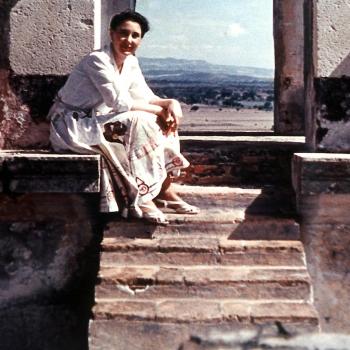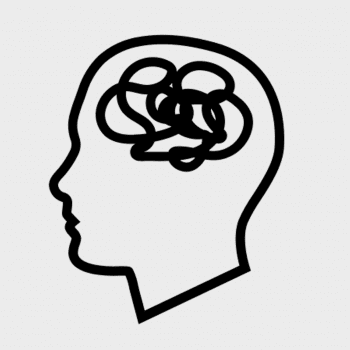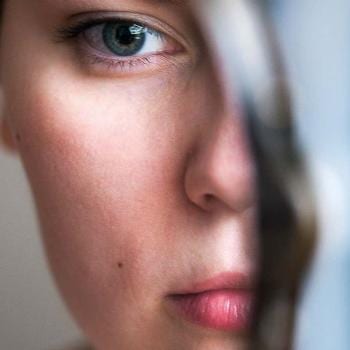The leaves are changing at Notre Dame. Autumn is the most beautiful time of year on campus: bursts of red and yellow are framed by a piercingly blue sky, and the sweltering heat of August fades to a brisk coolness.

The desolation of autumn
Autumn is a paradox. On the one hand, it is a period of desolation. As the green growth of summer decays and dies, the dry stiffness of the world tinges the soul with melancholy. As the poet Faiz Ahmed Faiz writes in When Autumn Came,
This is the way that autumn came to the trees:
it stripped them down to the skin,
left their ebony bodies naked.
It shook out their hearts, the yellow leaves,
scattered them over the ground.
Anyone could trample them out of shape
undisturbed by a single moan of protest.The birds that herald dreams
were exiled from their song,
each voice torn out of its throat.
They dropped into the dust
even before the hunter strung his bow.Oh, God of May have mercy.
Bless these withered bodies
with the passion of your resurrection;
make their dead veins flow with blood again.Give some tree the gift of green again.
Let one bird sing.
For some, the season can actually trigger Seasonal Affective Disorder (SAD). This recurrent subtype of depression, that predictably comes back every fall or winter. SAD is complex, and can’t be pinned down to any one causal factor. Research points to circadian rhythms, your 24-hour biological clock, as a potential way your sleep and mood get disrupted by changing seasons. These rhythms can alter your dopamine and melatonin levels, both of which have been implicated in depression. Another factor is photoperiodism, your biological response to changing length of days that may decrease your energy levels. For this reason, light therapy can be a helpful treatment because it mimics natural sunlight.
But for most, this season is merely melancholic. On the surface, it appears that life lessens during autumn. Light gives way to darkness, and vibrant fall colors slowly yield to emptiness.
Is this all there is for us, in autumn? A bleak descent into darkness?
The hidden side of autumn
Hidden within the death of autumn is new life. Because the leaves fall and die, new seeds are sown in the ground. The decomposition of leaves returns their nutrients to the earth. This provides fertile soil so that, as winter turns into spring, the seeds can grow and bloom. Thus, death passes into new life.
This is a beautiful image for the necessity of endings in our lives. In order for us to grow and change, we need certain things in us to die. In order to discover who and what we love, certain doors need to close.
We cannot perpetually be faced with the abundance of the summer harvest, for it would paralyze us. We cannot always hold on to the things we have, fearful of change. Instead, we need to let go — of false selves, of damaging relationships, of illusory dreams and disordered attachments.
This requires that we trust God, that we believe He will bring us back to new life. As in Rilke’s Autumn:
The leaves fall, fall as from far,
Like distant gardens withered in the heavens;
They fall with slow and lingering descent.And in the nights the heavy Earth, too, falls
From out the stars into the Solitude.Thus all doth fall. This hand of mine must fall
And lo! the other one:—it is the law.
But there is One who holds this falling
Infinitely softly in His hands.
So this autumn, I invite you to fall as the leaves do. Identify an area in your life where you need change and growth. Let go of control, and ask for God’s healing and help. There is one who holds this falling / Infinitely softly in His hands, and He will bring you to new life.
Further reading recommendations
A few more of my favorite Autumn poems: John Keats’ Ode to Autumn, Elizabeth Jennings’ Song at the Beginning of Autumn, Edward Thomas’ October.
More on Seasonal Affective Disorder here. Don’t hesitate to seek help if you if need it.












